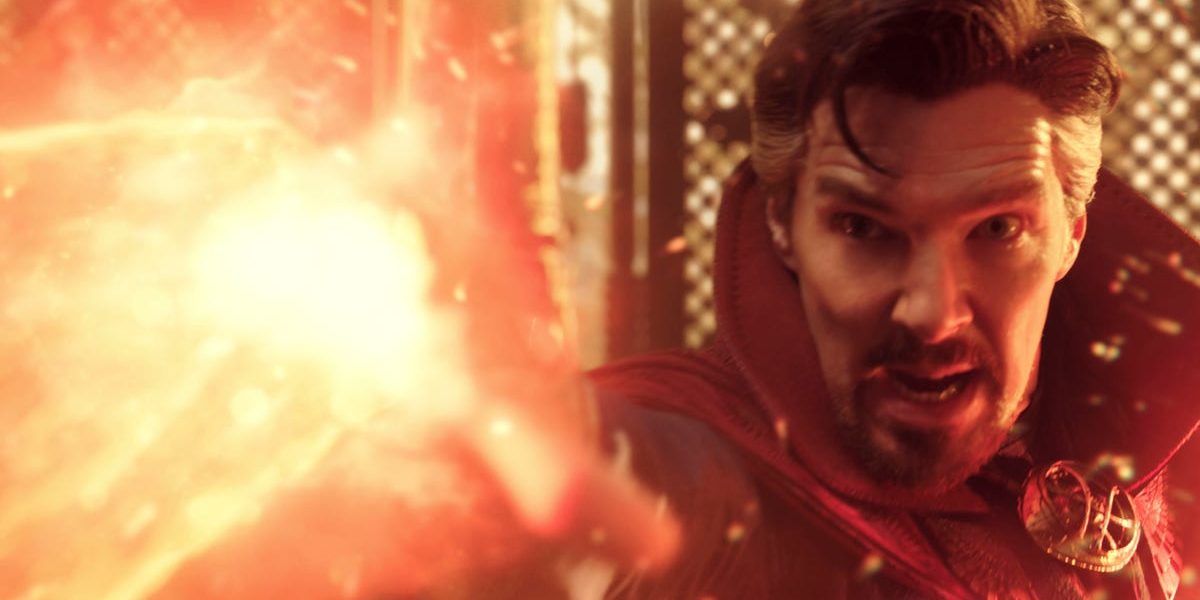Sam Raimi Takes Benedict Cumberbatch’s Supreme Sorcerer in Complex New Directions
DIRECTED BY SAM RAIMI/2022
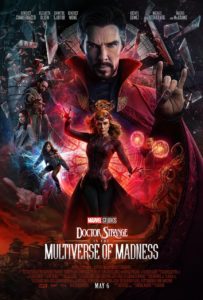
JIM TUDOR: Are you happy, Marvel Studios? After a decade-plus of unprecedented success fueled by quippy superheroes in easy-to-follow adventures, you’ve finally fully committed to going full nerd.
MCU fans who tuned in for the final episode of Loki on Disney+ found themselves stuck across the desk from a metaphysical mumbo-jumbo info-dump of epic proportions. There, the multiversal and trans-dimensional expanse of it all was merely described. With the highly anticipated Doctor Strange in the Multiverse of Madness, we get to see it firsthand. And, it’s a lot. The movie feels like A LOT. Similarly to the weakness of Eternals, this long-awaited Doctor Strange sequel loses momentum when it feels the need to explain itself. Per apparent internal MCU strictures, it feels that need quite often. Characters come and go rattling off new and/or altered plot mechanics that carry the film to its next steps. This happens repeatedly until the very end. Fortunately, veteran Merry Marching Marvel movie director Sam Raimi (maker of the Tobey Maguire Spider-Man trilogy) is at the helm, and unafraid to go cut loose with the crazy in-between the mandated world building.
Benedict Cumberbatch is of course back as the good (if often conflicted) doctor of the title. It is indeed strange to realize that for all his character’s ubiquitousness since his on-screen self-titled debut in 2016 that this is only his second headlining film. Dr. Strange has turned up in Thor: Ragnarok, Avengers: Infinity War, Avengers: Endgame, TV’s What If…?, and Spider-Man: No Way Home. In the latter three of those, he’s served to prime the narrative pump for the multiverse madness at which we’ve finally arrived.
All the while, Strange’s NYC-based magic house, Sanctum Santorum, and his trusty professional partner Wong (Benedict Wong) have also become MCU staples. But on the other hand, the time between his own films results in a strained distancing when it comes to native supporting cast members so vital in the original Doctor Strange. How well does anyone remember Rachel McAdams’ Dr. Christine Palmer or Chiwetel Ejiofor’s Mordo? Better brush up, true believers- both are back for this part two, and the movie ain’t slowing down to get us reacquainted.
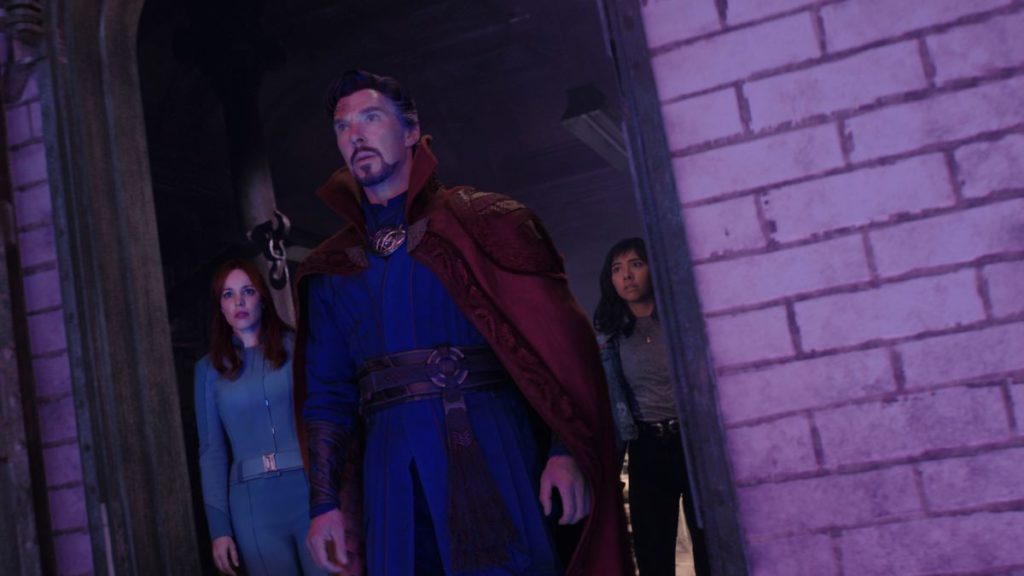
ERIK YATES: Marvel is indeed going full nerd, and I agree that of all the recent Marvel projects this outing connects to, the one that will be the most vital for fans to revisit simply due to the length of time since the debut is the first Dr. Strange film itself. After Scott Derrickson‘s initial offering, I was really looking forward to seeing how he would have introduced the horror elements he intended in his follow-up film. Once he officially left the project, I have to say that I was also excited at what Sam Raimi would bring given his own horror bonafides. Watching, with a smile, how many nods Raimi gives to classic horror films though, was a blast to look for in each sequence of the film. From his use of shadows, classic movie monsters, his portrayal of the supernatural, and even slasher film-styled chase scenes, they all are represented.
I have to say that while I would have loved for Doctor Strange in the Multiverse of Madness to go full horror, I understand why it couldn’t. There is an MCU standard, and each film still has to fit into a larger universe being built and mapped out by Kevin Feige and company. Raimi did a great job of providing the balancing act of this film by leaning into the horror genre, while still maintaining the humorous and yet recognizable (and required) feel of any Marvel other film. As bonkers as this movie could have gotten, Raimi is able to still provide an accessible film for someone like me who is a Marvel Cinematic fan, but not someone who is full nerd enough to get into the weeds regarding Dr. Strange lore and its faithfulness to the source material. I still might need to go full nerd though, in order to fully appreciate one of the two mid/post credit scenes that comes with this film.
You mentioned how much exposition comes with these movies now, and for this film in particular, and I agree. I believe this level of explanation is simply increasing because Marvel has to make each of these projects as possible entry points into the wider MCU for the casual watcher who might not have seen the connective tissue of the various limited streaming series, like Loki or WandaVision, that are popping up, or for the kids who are finally of age where they can digest all of the stories that make up the Marvel Cinematic Universe. At the same time, some 27+ prior films and various Disney+ streaming series later, it would be quite difficult to use this film as an entry point into the larger cultural juggernaut that the MCU now is. A Disney+ subscription and a whole lot of available hours to stream, until you are caught up, seems to be the only reasonable path available for those who haven’t been invested yet for whatever reason.
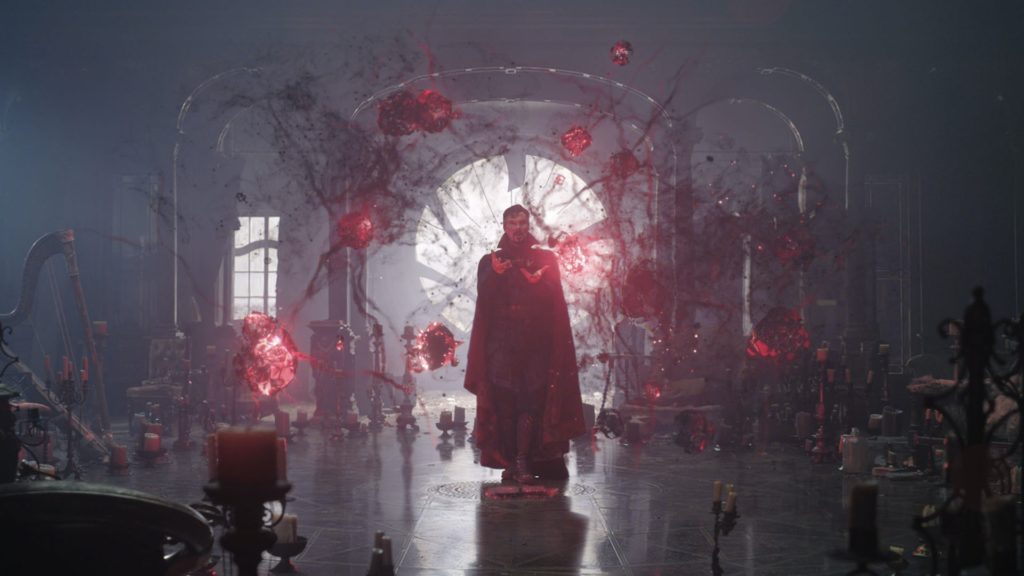
As far as the film itself, a pleasant surprise for me was how intentional Dr. Strange and the Multiverse of Madness is to continue to wrestle with the natural consequences of previous MCU stories and the threads that weave in and out of each entry. In that way, the MCU has been good at considering the effects and toll these various superheroes’ actions have caused, including the effects on the world, different communities, and the main characters themselves. From the first Avengers we saw the effects that the attack on New York had on Robert Downey Jr.’s Iron Man, how it formed the villain of the Vulture in Spider-Man Homecoming, to the effect of Ultron’s actions and the Avengers’ response in causing the formation of the Sokovia Accords which directly led to a fracturing of the Avenger team ala Civil War. For this Multiverse of Madness, Dr. Strange is coming to terms with who he will have to be to deal with this idea of a multiverse and the unknown threats it might introduce to his world. Some of these threats he got to experience in Spider-Man: No Way Home.
The most impactful story for me though, was how it also allows for Wanda Maximoff, and her turn as The Scarlet Witch, to wrestle with the themes of grief that were front and center in the effective limited series called WandaVision. So much could be said, but with Marvel’s desire to have us limit reviews to avoid spoilers, character development, cameos, and detailed story points, I won’t go much further except to say that on the whole I found that Doctor Strange in the Multiverse of Madness is a mind-bending good time. I hope this means Sam Raimi is indeed up for more wild and kooky adventures in the MCU sandbox.
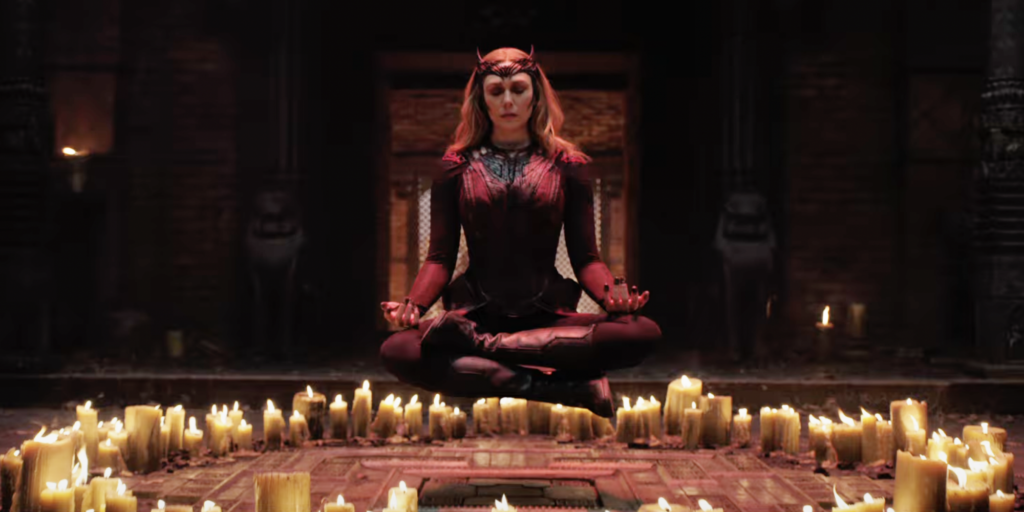
JIM TUDOR: I’m in full agreement about Raimi! Without him and his unapologetic knucklehead and macabre humor in the mix, I can’t imagine the narrative mishmash that most any other replacement director would’ve allowed this to become. I must confess that I went in fully expecting Raimi to be voluntarily invisible for this. We know that the MCU workflow is more like TV production than traditional movie production insofar as the “showrunner” (Feige), not the directors, has the real power and influence over thing. With projects like For the Love of the Game, Raimi set out to demonstrate that he could be a “working director” when he wanted to be.
That, however, like all his movies, was over a decade ago. (I believe Oz the Great and Powerful was the previous most resent?) I suppose it makes sense that if he were to be reeled in by an outfit such as Marvel, he would want a certain latitude of creative expression. With this, his films The Evil Dead and Army of Darkness sprung to mind more than once. Raimi clearly doesn’t mesh well with CGI, and of course Multiverse of Madness is CGI city. But vitally, the film ultimately works (sometimes in spite of itself) because Raimi and company manage to keep its central themes of loss and second-guessing past choices as the bedrock of the piece, not the avalanche of universe-bending/dream walking/alternate dimension-hopping/magic-using, and all the explanation of those things.
Also essentially, the cast understands this as well. Cumberbatch has really made this character his own, and works hard to imbue him with humanity-despite his ascribed “Strangeness”. Elizabeth Olsen, who took up the identity of “Scarlet Witch” in the great series WandaVision, continues her character’s story with great prominence. New in the mix is the young America Chavez (Xochitl Gomez), a young girl unable to control her powers of opening dimensional portals. (Soooo many portals… listeners of Conan O’Brien’s podcast will immediately know that the portal-averse comedian will absolutely hate this movie!). Ms. Chavez is just one of several characters with underlying trauma and/or unreconciled brokenness. The characters most certainly are not happy, but there’s a distinct sense that the filmmaker sure is. Speaking purely as a critic and not as someone who is seeing a lifelong dream of seeing Marvel Comics come to life (which I am), I must say that this is merely good, not great movie. It is undeniably jumbled, and quite caught up in itself. As for the legion of MCU fans who love to connect as many dots as possible, they are likely to be the happiest of all.


